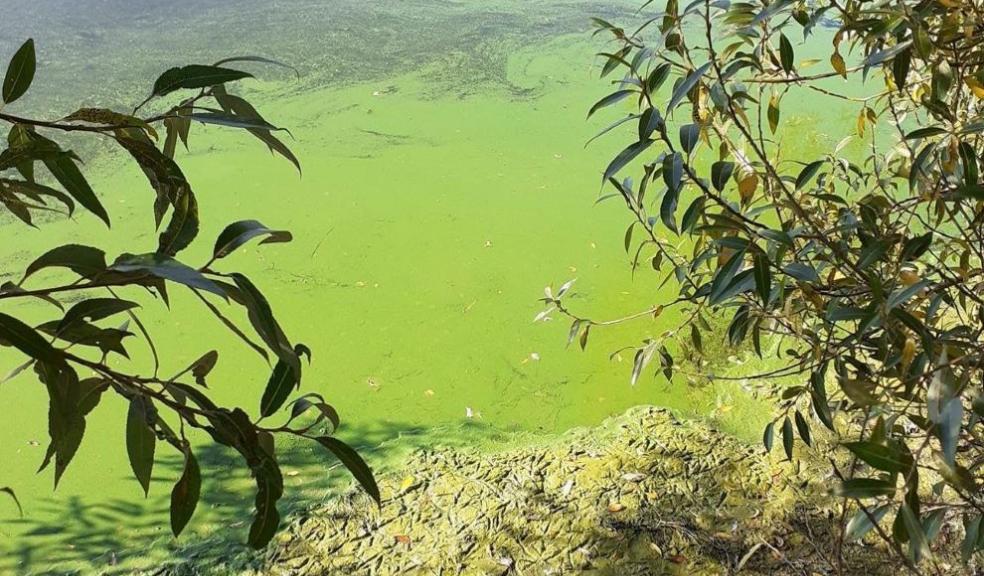
Vets issue blue green algae warning to pet owners
The UK’s leading pet emergency vets are issuing a warning today about blue green algae, a bacteria found in bodes of water like ponds, which is highly toxic to dogs.
Vets Now, the pet equivalent of A&E, is calling on pet owners to take care when walking their dogs near water this summer and to look out for the green, blue green or brown coloured scum or foam.
It comes of the back of the British Veterinary Association (BVA) warning that hot weather conditions have led to concerns about an increase in toxic blue-green algae in locations across the UK.
One of the country’s leading emergency vets, Dr Laura Playforth, professional standards director at Vets Now, said: “Blue green algae, also known as cyanobacteria, are tiny organisms typically found in freshwater lakes, ponds, reservoirs and slow-moving rivers. It blooms on the surface and is highly toxic to dogs, commonly causing vomiting, diarrhoea, seizures, breathing difficulties and coma.
“It can lead to liver damage and death.”
Dr Playforth added: “If you suspect your dog has been exposed to blue green algae, contact your vet straight away or, out of hours, your nearest Vets Now pet emergency clinic or 24/7 hospital. There is no antidote for the toxins produced by blue green algae so early, aggressive veterinary treatment is essential for the best chance of success.”
Blue algae case study:
Emergency vets and vet nurses come to the rescue of critically-ill Tala
A play in a pond almost cost Border Collie Tala her life.
The four-year-old was left critically ill by the lethal blue green algae in the water.
Owner Russell Moody feared he’d said his final farewell to his beloved pet. But the desperately ill dog, just moments from death, was miraculously brought back to life by a team or vets and nurses at Vets Now in Lincoln.
Now Russell is backing warning calls about the deadly dangers of the algae, which has blossomed in the recent hot weather. And he’s urging owners not to waste a moment in getting help if their pet gets into trouble.
Russell had taken Tala and sister Harli for a walk on farmland near their rural home in Dunham-on-Trent, Nottinghamshire, when disaster struck in early summer of 2020.
“There’s a beck and a pond and they were playing happily in and around the water for about an hour,” said greenkeeper Russell, 56.
“I noticed Tala squinting and then she started staggering as if her balance had gone. It was such a shock and when I got her home and she couldn’t get out of the car, I really started to panic.
“I called my vet and, as it was the evening, I was referred to Vets Now and was told to bring her straight in. By the time I went back to the car she was running at the mouth and she was totally unresponsive.
“It was a real emergency run to get help just as quickly as I could.”
The Vets Now clinic in Lincoln is one of a nationwide network of hospitals and clinics that are open every night, and day and night at weekends and bank holidays for pet emergencies.
Last year’s Covid-19 restrictions meant Russell had to wait in the car while the staff assessed the situation.
“She was in a very bad way,” said veterinary nurse Alana Taylor. “She wasn’t responding to stimulation and her pupils were dilated. We did a radiograph to check her chest was clear as it was thought she may have inhaled water, but we suspected it was blue green algae toxicity due to the quick onset of signs.”
Blue green algae, also known as cyanobacteria, are tiny organisms typically found in freshwater lakes, ponds, reservoirs and slow-moving rivers. It blooms on the surface and is highly toxic to dogs, commonly causing vomiting, diarrhoea, seizures, breathing difficulties and coma.
It can lead to liver damage and death.
Tala was given an injection to make her sick and bring up the algae and was put on oxygen and intravenous fluids. But with her condition critical, it looked like staff may have to make the toughest decision.
“She was close to having to be put to sleep when, somehow, she suddenly turned a corner,” said Alana. “Her demeanour changed after about three hours and she became aware of her surroundings and wagged her tail when we spoke to her.”
Russell was kept informed throughout and he admits he feared the worst.
“I expected to be getting a phone call telling me she’d died,” said Russell. “It really was touch and go and it was unbelievable that she came through it.
“I always thought she was such a laid-back dog who just liked to sleep but she proved me wrong. She obviously has something deep inside her and is a real fighter.
“It was a magic moment when we heard she was going to be okay and then seeing her again was so special. It was like getting her as a pup all over again.
“We can’t thank the staff enough.”
Russell hadn’t been aware of the algae dangers in the water and is warning other owners to be on the lookout.
“I’d definitely advise people to keep their eyes on their dog at all times when near water and take bottled water rather than let them drink from a stagnant pond,” added Russell.
“And don’t delay if you see any signs. If I hadn’t had the car with me, it could all have been over by the time I got her home. We were really lucky.”
Vet advice about blue green algae from Dr Laura Playforth, professional standards director at Vets Now
What is blue green algae?
Blue green algae — also known as cyanobacteria — are tiny organisms typically found in freshwater lakes, ponds, reservoirs and slow-moving rivers. The bacteria forms on the surface of the water and blooms, to create a green, blue green or brown coloured scum or foam. Some blue green algae is highly toxic to dogs.
What causes blue green algae?
Algae will only grow if conditions are right. It needs adequate nutrients, such as phosphorus and nitrogen, and temperatures need to be reasonably warm. The more nutrients there are in the water, the more likely it is blue green algae will flourish.
Why is blue green algae bad for dogs?
Some types of blue green algae release toxins (such as microcystins and anatoxins) into the water. These toxins are not only highly poisonous to dogs when swallowed but are also dangerous for cats, horses, birds, cows and humans. Unfortunately, without laboratory analysis, it’s impossible to tell which blue green algae blooms are toxic and which aren’t.
Blue green algae dogs signs and symptoms
If a dog swallows algae containing a combination of the most severe toxins (neurotoxins and hepatotoxins), they may start showing signs within minutes. Signs in dogs exposed only to hepatotoxins can take between one and a few hours to show.
The most common signs of blue green algae poisoning include:
- Vomiting
- Diarrhoea
- Disorientation/weakness
- Breathing difficulties
- Drooling
- Seizures
- Blood in stools
- Coma
- Shock
If left untreated, exposure to blue green algae can lead to liver damage and death within a matter of days.
My dog drank algae water, what should I do?
If you suspect your dog has been exposed to blue green algae, contact your vet straight away or, out of hours, your nearest Vets Now pet emergency clinic or 24/7 hospital. There is no antidote for the toxins produced by blue green algae so early, aggressive veterinary treatment is essential for the best chance of success.
How will my dog be treated for blue green algae poisoning?
This all depends on the toxins your dog has been exposed to. It’s likely they will be given oxygen and intravenous fluids to help flush the toxins from the body. Your dog may also require intensive care and medication for seizures, respiratory distress or liver failure. Thankfully, surviving pets do have a good chance for recovery.
How can I prevent blue green algae poisoning in my dog?
Never let your dog swim in or drink from water sources you suspect may be contaminated by blue green algae, and if your dog has been swimming outside, always wash them thoroughly afterwards. Avoid going near any ponds or lakes that are known, or suspected, to contain blue green algae and ensure your pet does not have access to contaminated water. Remember, algal blooms have even been known to appear in garden ponds. If there are blue green algae warning signs in the area you’re walking keep your dog by your side.
Where is blue green algae found?
Blue green algae is most commonly found floating on the surface of freshwater lakes and ponds. However, toxic blooms are often blown to the edges — meaning dogs and other animals can be exposed to them even if they haven’t gone in for a swim or paddle. Dog owners should also bear in mind that even if there’s no visible scum or foam on the surface of the water, it doesn’t mean blue green algae isn’t present. It can be suspended at various depths, depending on the conditions. The bacteria has also been found on surfaces near water after being blown by the wind.
When are dogs most at risk from blue green algae?
Blue green algae most commonly occurs during the summer when rainfall is low, the sun is shining, and temperatures are higher — as this is when the blooms are more intense. Dogs who regularly swim or paddle in freshwater lakes and ponds are most likely to be exposed to algal poisoning. Many cases are the result of dogs inadvertently swallowing algae-contaminated water, but there have also been instances of dogs falling ill after licking their fur following a swim.







